As of the 5th October, Gas and Electricity Year Ahead Wholesale costs were slightly lower when compared to last month’s report.
The price of Oil continues to fall, at $40 a barrel, from $42. Reduced production cuts by OPEC+, which includes Saudi Arabia and Russia, and more supplies being available from Iran and Libya, are contributing factors. There is concern for growth of the global economy, with rising coronaviruses cases. Industrial action has closed a number of Norwegian Oil and Gas fields, which may support prices.
Gas Wholesale costs remain competitive, as illustrated by our graph. September was another month with high use of Gas for Electricity generation, although lower than August. There was pressure on supplies due to maintenance outages, low LNG deliveries and a higher use for heating demand, due to lower temperatures. Combined, these factors reduced our Gas storage levels.
Electricity Wholesale prices are also competitive, lower than 2018 and most of 2019. There were increased contributions from Nuclear and Renewable supplies, which allowed for a small reduction in the use of Gas for generation.
The Met Office forecast for the next month suggests average temperatures, although there could be some night frosts, increasing Gas use for heating. Changeable conditions, including rain and gales in some regions would provide good Wind generation but poor Solar, requiring the continued support of Gas generation. This could pressure Wholesale Gas and Electricity prices.

Wholesale prices still show good value. It should be remembered that this element makes up in the region of just 40% of the total cost of an Electricity bill and roughly 60% for Gas.
Increasing third-party costs are noticeable in Electricity contracts. These include, Transportation, Distribution, and government policy levies.
Over the next few years, the way some of these charges are calculated will change, under the Targeted Charging Review, although the details are not yet available. Initially the first change to Transportation costs was due April 2021, but with delays issuing price guidelines to energy suppliers, this has been postponed until April 2022. The planned change to Distribution charges is still set for April 2022. This does mean that the expected opening of some fixed priced contracts should not take place until 2022.
We advise requesting supplier offers for all 2020 and early 2021 start contracts to compare against your current prices. Be aware that suppliers have tightened their credit requirements and reduced their risk appetite, although there is evidence these positions are easing. Good forward contract options can still be negotiated.
Please contact us on 0333 320 0475 to discuss options or to get a latest update.
On the 5th October, the Gas Year Ahead Wholesale cost was 35.37 (p/th), from 36.07 (p/th) in last month’s report and 23% lower than 2019.
In September we needed high volumes of Gas for Electricity generation, which has continued over the last week, meeting 47% of Electricity demand, due to low Renewables.
Some of the issues that disrupted supplies have been resolved. This provides hope that we could see improved Imports from Europe and more LNG deliveries, although there is a growing demand for LNG from Asia, which is driving up the cost. Storage levels here and across Europe remain high, despite our recent withdrawals.
Although we have seen lower temperatures, we still await a very cold spell, which typically has an immediate but short-term impact on Gas, and a knock-on effect on Electricity.
Let us know if you would like us to research your options for 12, 24 and 36 month contracts.
On the 5th October, the Electricity Year Ahead Wholesale cost was 46.19 (£/MWh), from 47.27 (£/MWh) in last month’s report and 7% lower than 2019.
There was a small increase in Electricity demand in September and was comparable to 2019, demonstrating that the majority of industry is up and running, albeit with adapted working practices. Concern as to the extent of the 2nd wave of the coronavirus is reducing forecast demand expectations.
Renewables were higher in September but have been low over the last week, requiring the large use of Gas generation, at 47% of Electricity demand, compared to 43% last month. Nuclear was up at 17% and has seen further improvements to 18%, due to an asset coming back online.
Recently we have seen short periods of tight supply margins, so heading into the colder darker months, this could raise concerns. However, the industry remains confident due to more Nuclear and Gas generation coming online and the government mechanisms in place to secure generation or reduce demand. These mechanisms do come at a cost, in the form of higher, Third Party Charges, which are added into the costs of Electricity bills.
Let us know if you would like us to research your options for 12, 24 and 36 month contracts
"Indigo Swan were professional but with a personable approach. Their market knowledge allowed me to enter new contracts with confidence, this was something I was unable to do with my previous broker."
Joanna Thornton, Estate Manager
"The experience behind the Indigo Swan team, their passion and integrity were all important to us. They clearly understood the market and could provide the best advice. "
Phil Riseborough, Head of Facilities
"We’ve worked with other energy consultants, but with Indigo Swan we get real integrity and service that is way beyond our expectations. We have already saved over £120k."
Jason Wakefield, Procurement Manager
| Cookie | Duration | Description |
|---|---|---|
| TawkConnectionTime | session | Tawk.to, a live chat functionality, sets this cookie. For improved service, this cookie helps remember users so that previous chats can be linked together. |
| Cookie | Duration | Description |
|---|---|---|
| SRM_B | 1 year 24 days | Used by Microsoft Advertising as a unique ID for visitors. |
| Cookie | Duration | Description |
|---|---|---|
| CONSENT | 2 years | YouTube sets this cookie via embedded youtube-videos and registers anonymous statistical data. |
| MR | 7 days | This cookie, set by Bing, is used to collect user information for analytics purposes. |
| _ga | 2 years | The _ga cookie, installed by Google Analytics, calculates visitor, session and campaign data and also keeps track of site usage for the site's analytics report. The cookie stores information anonymously and assigns a randomly generated number to recognize unique visitors. |
| _gat_gtag_UA_12371872_1 | 1 minute | Set by Google to distinguish users. |
| _ga_* | 1 year 1 month 4 days | Google Analytics sets this cookie to store and count page views. |
| _gcl_au | 3 months | Provided by Google Tag Manager to experiment advertisement efficiency of websites using their services. |
| _gid | 1 day | Installed by Google Analytics, _gid cookie stores information on how visitors use a website, while also creating an analytics report of the website's performance. Some of the data that are collected include the number of visitors, their source, and the pages they visit anonymously. |
| Cookie | Duration | Description |
|---|---|---|
| ANONCHK | 10 minutes | The ANONCHK cookie, set by Bing, is used to store a user's session ID and also verify the clicks from ads on the Bing search engine. The cookie helps in reporting and personalization as well. |
| MUID | 1 year 24 days | Bing sets this cookie to recognize unique web browsers visiting Microsoft sites. This cookie is used for advertising, site analytics, and other operations. |
| test_cookie | 15 minutes | The test_cookie is set by doubleclick.net and is used to determine if the user's browser supports cookies. |
| VISITOR_INFO1_LIVE | 5 months 27 days | A cookie set by YouTube to measure bandwidth that determines whether the user gets the new or old player interface. |
| YSC | session | YSC cookie is set by Youtube and is used to track the views of embedded videos on Youtube pages. |
| yt-remote-connected-devices | never | YouTube sets this cookie to store the video preferences of the user using embedded YouTube video. |
| yt-remote-device-id | never | YouTube sets this cookie to store the video preferences of the user using embedded YouTube video. |
| yt.innertube::nextId | never | This cookie, set by YouTube, registers a unique ID to store data on what videos from YouTube the user has seen. |
| yt.innertube::requests | never | This cookie, set by YouTube, registers a unique ID to store data on what videos from YouTube the user has seen. |
| Cookie | Duration | Description |
|---|---|---|
| CLID | 1 year | No description |
| SM | session | No description available. |
| twk_idm_key | session | No description |
| _clck | 1 year | No description |
| _clsk | 1 day | No description |
